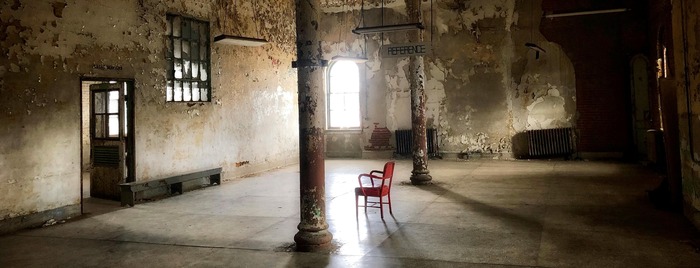
05 Jul, 2024/ by Homeward Legal /Buyer, News, Sale & Purchase
The UK election has, naturally, been dominating the news for some time, with the plans put forward by each party coming under microscopic scrutiny by journalists and commentators to ensure they are robust enough to withstand the inevitable questions.
Most of this is par for the course and the manifesto of each party are generally straightforward enough to understand without too much head-scratching.
But one term that increasingly comes out is “greyfield site” when talking about housing policy for the new parliament. It's of particular interest if you have in mind plans to build your own property.
Most of us are no doubt familiar with the terms “greenfield site” (an undisturbed piece of land that has had no development on it) and “brownfield site” (land that has had previous development on it but which is no longer in use - think “abandoned housing estate” or “declining and unused groups of garages”).
But what is meant by a “greyfield site” (and its sister term “grey belt”)? It's important to understand the distinction so that you know the provenance of any new building whether it's part of a greater development or a bespoke build for your own needs.
The greyfield site
The term is relatively new being coined back in the nineties, with the intention of defining something that hadn't fallen completely into disrepair and disuse - that is the “grey area” between the undeveloped greenfield sites and the developed but unused brownfield sites.
However, as is often the case with the English language, the term has been developed itself and now encompasses anything from disused shopping centres and car parks to abandoned swimming pools and roof-tops.
What has also become apparent, too, is that the term has been used to include land that is in a set proximity (say, 1 mile radius) of certain buildings such as a railway station. The unfortunate impact of this extra definition means that “greyfield site” could envelop what is currently designated as greenfield.
What it means after 4 July
If the polls are to be believed, it is highly likely that the new government will be formed by the Labour Party, who are the biggest proponents of the terms “greyfield sites” and “the grey belt” in the housing manifesto, with their ambitious plan to drive housebuilding (particularly where it concerns affordable homes and social housing).
But what does that actually mean?
The Campaign for the Protection of Rural England (CPRE) has responded specifically to the Labour manifesto, saying that they agree with the statement that the focus should be on developing brownfield sites as a priority.
The CPRE also has reservations with the planned policy of the “greyfield” categorisation - something that Labour want to officially define - as long as the plans don't impinge on the green belt, since these are there to “prevent urban sprawl” and “these functions are just as valuable today as they were at its inception”, and there is concern about the stated inclusion of “ugly wastelands”. The CPRE feels that without appropriate management, the plans might lead to unscrupulous speculative development where owners allow the area to go to seed and easily fall into the definition of an “ugly wasteland”.
On the rest of the manifesto plans, the CPRE have been explicit in raising their concerns in what they term as “rhetoric” when it comes to plans that impinge on the Green Belt areas themselves.
The future
Politics, by its very nature, is rarely straightforward, and there is a long history of manifesto pledges being changed or quietly dropped.
There is also the possibility that something will impact the decision-making or even completely overturning the incumbents of the current ruling party come 5 July.
But, one thing is for certain: Britain needs more housing to alleviate the current crisis in social and affordable housing, while the problem of being able to get onto the property ladder also needs to be addressed.
And it's going to be potentially worrying if you are looking to buy your own plot of land to build a bespoke home - what does it mean with any restrictions that might be imposed? And what are your options when you want to make the right decision, while developing the best property for your future living requirements?
Watch this space!
Looking to build your own home? Worried about the restrictions that might be imposed on an area for building or extending? Don't worry! You can rely on Homeward Legal to help with affordable but quality conveyancing services!
They will start work on your planned purchase (and/or sale) as soon as you agree to the quotation and appoint them to represent you.
Homeward Legal will also provide a quote that will not change - what you are quoted is what you pay for standard conveyancing process.
There are some unforeseen items that might arise during the purchase and/or sale, but the solicitor discusses these and their cost as they come up.
In addition, to protect the homebuyer further, Homeward Legal operates a ‘no completion, no fee' promise, which ensures that, should the purchase or sale not go through as planned to completion status, no payment is required.
Call to get your conveyancing quote started, or to discuss your concerns with your plans to move.
Or you can get a quick quote, using Homeward Legal's easy-to-use quote generator.
